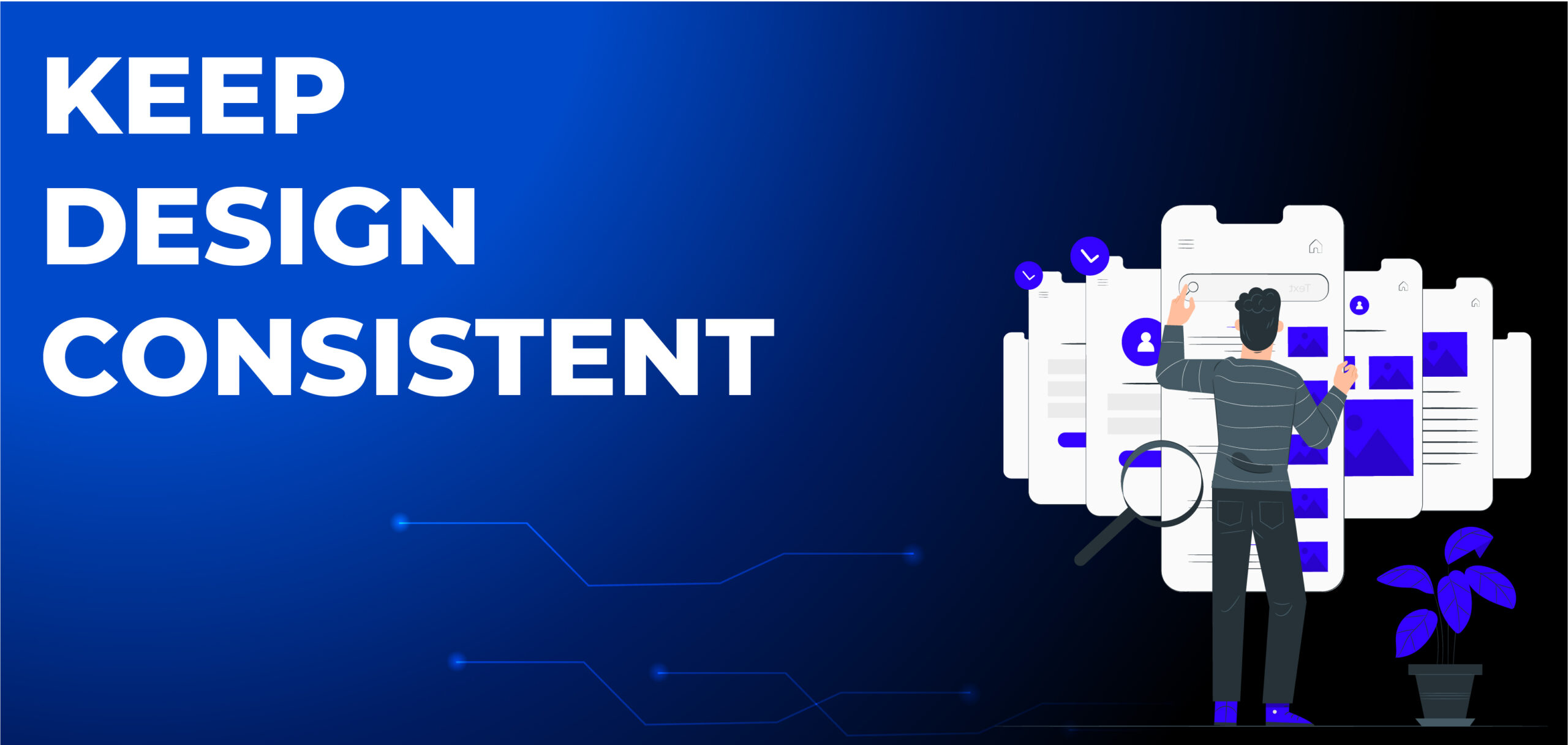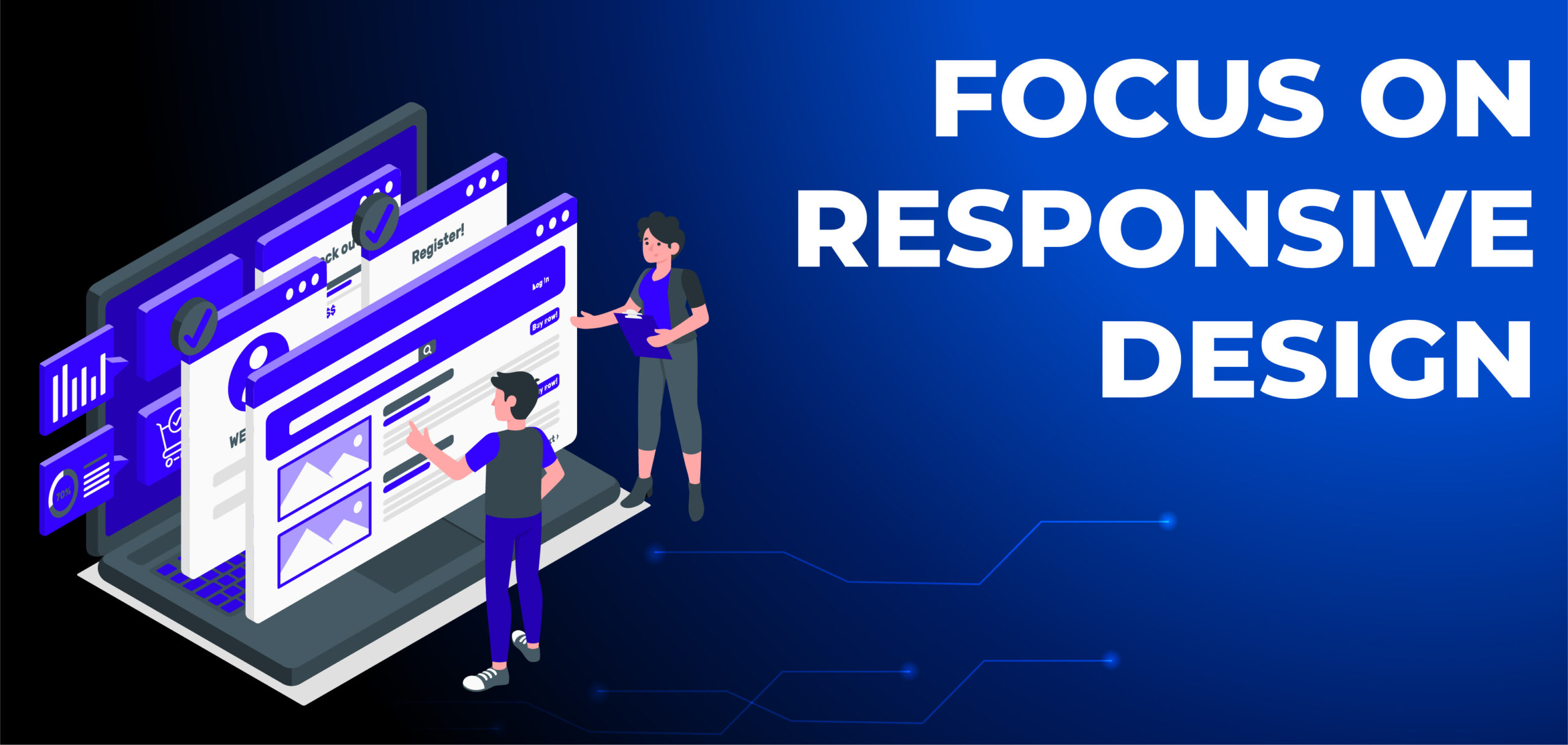As a top UI UX designer, we are explaining Top 11 UI UX Design Principles for Creating Great Websites and Mobile Apps. Because great design goes a long way. The visitors with your website sets the stage for their relationship with your product, your company, and your brand. A coordinated UI/UX design will produce a website that is visually attractive as well as easy to navigate for your users
UI/UX Design is a field that requires creativity and is also dynamic. Despite these constant changes, there are fundamental principles that every designer should know and understand. These principles are concepts that guide the design of software products. You must align your work with these principles to ensure you create designs that are aesthetically pleasing, easy to understand and use.
In this article, we put together the top UI/UX principles and best practices selected by our team of experienced UI and UX design professionals.
1. DESIGN FOR YOUR USERS, NOT FOR YOURSELF
Most of the designers tend to design products considering himself/herself the only user of the product.
For Example, can be the color of the t-shirt. You like the purple color a lot. That’s why you have chosen a purple t-shirt for design. But the maximum number of people in the world like a black t-shirt. In that case, you may lose a big market because of color.
And for that reason, at the time of designing, you have to think about what your users want in your design and what will make them smile.
2.KEEP IT SIMPLE
People spend less than 15 seconds on a website. Keeping them focused on your brand’s message requires a design that is clear and simple. This can be achieved by following the “less is more” concept and avoiding a busy, cluttered design.
Users are more likely to find the key messaging on your website if they have less content to scroll through and fewer options to choose from. Minimizing the options on your site will increase the likelihood that readers will take the action your brand seeks, such as leading them through a sales conversion funnel. Imagine the best grocery store experience where everything along the way is exactly where you need it!
A simpler design also loads faster and reduces the bounce rate from your site.
BONUS POINTS: THIS ALSO BOOSTS YOUR SITE’S SEARCH ENGINE OPTIMIZATION (SEO)!
3. PUT THE USER IN THE DRIVING SEAT
Users should feel fully in control—whether or not they really are in control. This means making the UI fade into the background. It should always be there when the user needs it, of course. And exactly where they expect it to be, too. But nobody should ever feel like the interface is forcing them into a certain action or making decisions for them. Even if in some cases this may be precisely what’s going on.
4. ENSURE DIFFERENT ELEMENTS ARE VISUALLY DISTINCT
Designing a visibly distant page layout should be the most crucial goal of all the UI UX designers. Here, it is necessary to offer flawless user journey and interactive user experience. In simple words, a user should find what they want from the page without making much effort.
Here are some of the things you can consider for making a website/app visually distinct:
● Essential information on the site should appear unique from the entire page. For example, in a blog, you should have a straight title like best tools for designers, followed by relevant headings & subheadings.
● Users should instantly identify their location on a website/ app. Navigation tools should be easily accessible. For instance, ensure that the navigational panel of the website is on top so that all the other components are quickly accessible.
● All the call-to-action buttons should be unique and offer clear-cut details about the intent.
● The search bar should be unique, and it is mainly presented using the placeholder text “search” text, including the glass icon.
5. KEEP DESIGN CONSISTENT

When people start using a new product, they expect it to be similar to what they have already experienced before. This way, users may reduce the cognitive load they encounter trying to learn something new. Design consistency follows the idea of so-called transferable knowledge. Microsoft adheres to this concept making design consistent throughout all products. For example, using Microsoft Word will help quickly adopt Excel or PowerPoint, which have similar UI concepts.
Being comfortable for users, design consistency makes the design process easier for UX and UI designers as well. There is no need to continuously create new solutions when starting to work on a new product.
6. USER CONTROL AND FREEDOM
The design should give users control in the process, allow them to redo, undo and cancel an action that they have already taken. A product that considers this principle is Google docs. You can undo changes you have made to a document and redo any change you reversed.
7. FOCUS ON RESPONSIVE DESIGN

Mobile usage has surpassed desktop usage and each year its share of online traffic rises. That’s why you need to use a responsive design on your site so that users can easily read and navigate it on any device.
A website design that isn’t mobile responsive may, for example, force users to enlarge the text on the screen to make it legible. Most often, readers who have to adjust the site on their cell phones to work around your non-responsive design will simply give up and leave your site. Providing a responsive website doesn’t only enhance the user experience. In fact, Google awards higher rankings to sites that are mobile-friendly, which translates into higher traffic on your site. (There’s that SEO, again!) Responsive websites load more quickly, look great on every screen, and are easier to update.
It’s critical to make a positive first impression on users coming to your site from mobile devices. If you don’t, you might lose them to competitors’ more mobile-responsive sites.
8. MAKE INTERFACE READABLE
Make your content legible and readable is vital. Users will not read your content if it doesn’t look clear and digestible. Designers should always put the readability of the content in the first place, and look for styles that make the interface both usable and visually appealing.
A lot of factors can influence readability, including background color, visual hierarchy, white space, context, typography, etc. But the font selection is a crucial factor among them. Designers should use different fonts for different types of websites or applications. For example, a serif is easier to read for long content.
9. COLORS MATTERS

Color can speak, as powerful as any other element on your interface. Human beings tend to be naturally attracted by beautiful visual appearance. Color is one of the key factors that can set the basic tone and mood of interfaces.
Use color wisely in UI design. Color can reflect the personality of a brand and even influence the purchasing decision. A well-designed color scheme is the half success of an effective and good-looking interface.
Here are some things to consider while adding colors to the website/app:
● Background colors are muted.
● The blue color is used to present links, and the red color is used to show warnings & signs.
● Call-to-action should show a hue that keeps it unique from all the other content on the page.
10. MAKE THE BEST USE OF DEVICE ABILITIES
The number of devices its type today present a long list of categories and sub-types. The innovation always increases this device spree. But as app designers, you need to ensure a seamless experience for all devices. You cannot expect that your app will be used by one kind of device user. And such an app cannot win hearts as it must either be a personal app or app for a particular company or trade.
11. FEEDBACK
One of the easiest ways to communicate with the user is to provide timely and contextually relevant feedback. On the other hand, a lack of feedback causes anxiety.
Use both visual and audio feedback. Audio feedback works well when it’s necessary to notify the user about a problem. For instance, audio feedback can give a clear signal that one more operation may lead to data loss. Users should be able to disable audio feedback.
WRAPPING UP
The primary purpose of UI/UX design is ensuring to make a design that works for your users and your business. For this, you need to provide information as per the users’ needs and remove all the unwanted things that create hurdles in their journey.
If you are planning to create a design for your web or mobile app, don’t hesitate to contact us. We at Guru TechnoLabs, a well-known UI/UX design agency in USA and India, can provide you with the best UI/UX design as per the requirements & goals.
